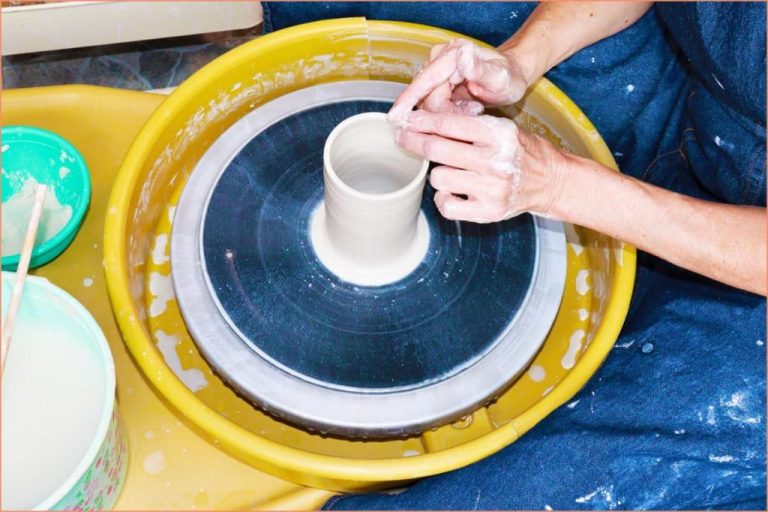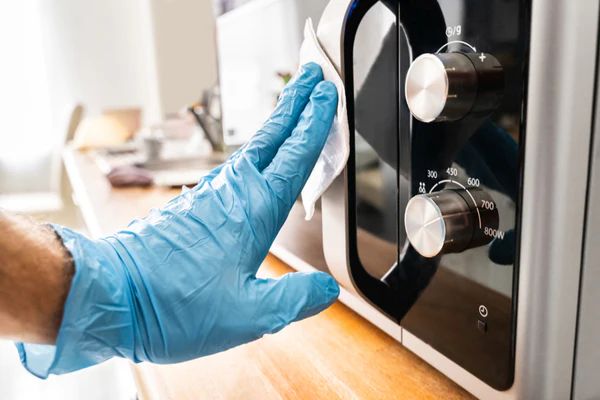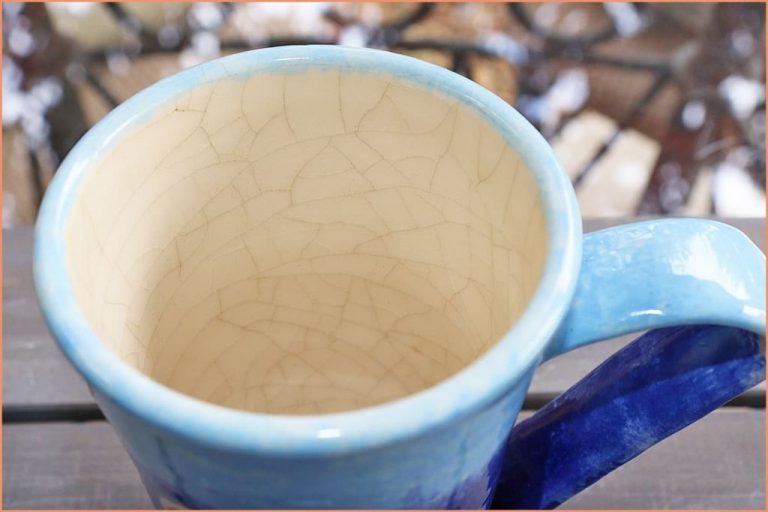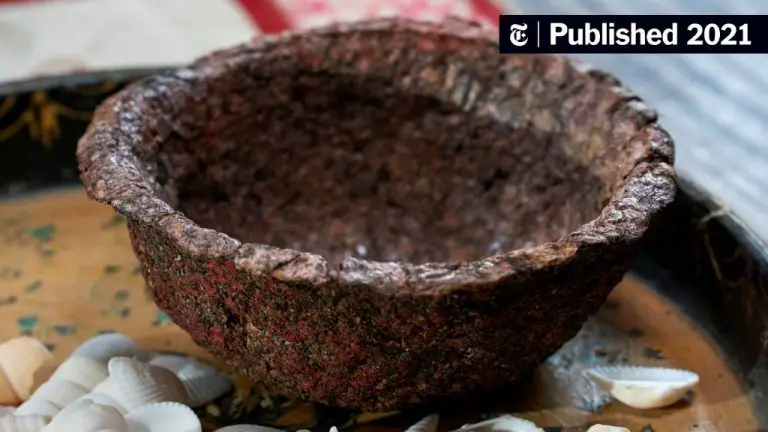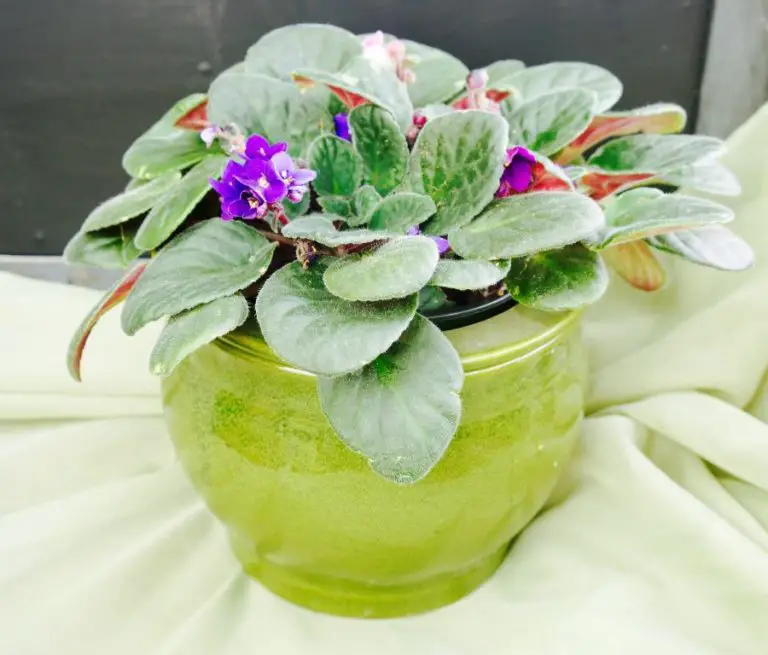What Do You Mean By Glazing?
What is Glazing?
Glazing refers to the process of applying a coating to a surface in order to provide a smooth, glossy finish. The coating, also called a glaze, can be made from various materials such as porcelain, enamel, or lacquer (Glazing Definition & Meaning – Merriam-Webster). Glazing serves both functional and decorative purposes. Functionally, it creates a protective barrier that makes the underlying material more resistant to weathering, abrasion, and other damage. Decoratively, glazing provides an attractive shiny surface and allows for creative expression through colored glazes and decorative techniques.
There are several main types of glazes used in various applications:
– Ceramic glazes used on pottery, tile, and other clay products
– Architectural glasses used on windows, doors, and structural facades
– Food glazes used to coat or finish foods like doughnuts, fruits, and meats
– Wood finishes and varnishes on furniture, floors, and other woodcraft
– Automotive and industrial coatings on metal, plastic, fiberglass, and composite materials
(GLAZING definition in the Cambridge English Dictionary)
While the specific materials and techniques vary widely, the purpose of glazing remains the same – to provide a smooth, durable, visually appealing coating to enhance the object being glazed. Proper glazing requires an understanding of materials, specialized tools, and application methods to achieve the desired aesthetic and protective properties.
History of Glazing
The origin of glazing dates back thousands of years. Evidence shows that glazing techniques were used in ancient Egypt and Mesopotamia. Glass beads and glazes were applied to pottery vessels as early as 1500 BCE. According to the Tru Vue article on the history of glazing in museums, ancient Egyptian artisans developed glass glazing methods, applying them to beads, inlays, small vessels and more (Tru Vue, 2016).
Over time, glazing techniques evolved and improved. The discovery that mixing sand with minerals like soda and limestone could create glass was a major breakthrough. This allowed Glassworkers to create larger transparent panes that could be used for glazing windows. As Gardinia Windows explains, windows with small glass panes set in lead frames started appearing in the 7th century CE. Through the medieval period into the Renaissance, glazing windows with colored glass became an art form, seen in ornate cathedral windows (Gardinia Windows).
In modern times, industrialization allowed mass production of glass panes, enabling glazed windows and doors to become commonplace in buildings worldwide. Glazing techniques expanded beyond glass to include acrylic, vinyl, aluminum and other materials. Today, glazing remains an evolving art and science, used decoratively in artworks and functionally in architecture.
Types of Glazes
There are several main types of glazes commonly used for pottery, wood finishing, and other applications:
Oil-Based Glazes
Oil-based glazes like linseed oil or tung oil are made from natural oils. They provide a traditional hand-rubbed look on wood while protecting the surface. Oil-based glazes enhance the natural grain and bring out a warm glow in the wood. They take longer to dry compared to other finishes.[1]
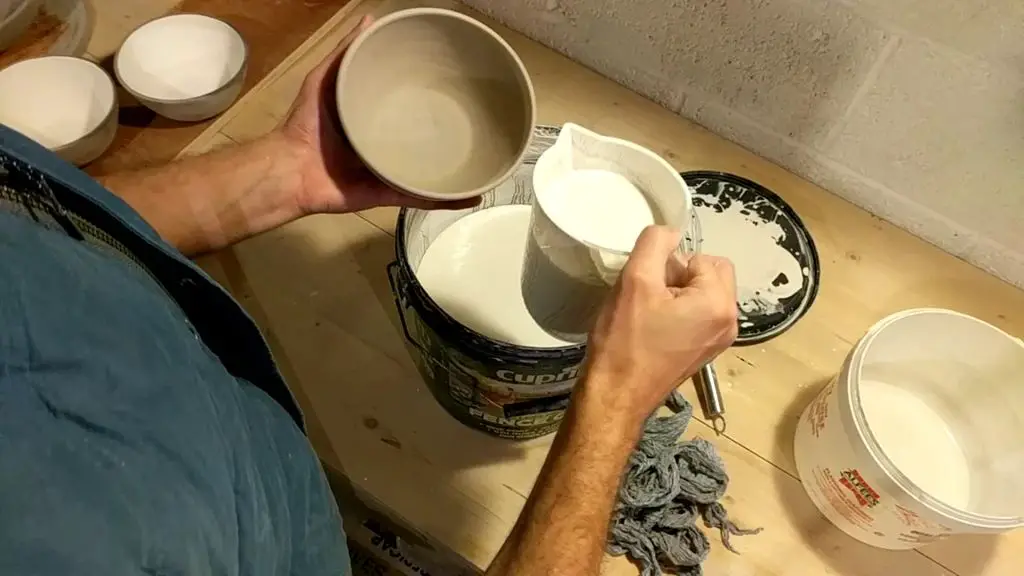
Latex Glazes
Latex glazes contain acrylic latex polymers suspended in water. They provide a durable, flexible finish and are easy to apply. Latex glazes level nicely to create a smooth surface and are fast-drying. They are commonly used on walls and other porous surfaces. Clean up is easy with just soap and water.[2]
Epoxy Glazes
Epoxy glazes contain epoxy resins mixed with a curative or hardener. They provide an extremely tough, durable finish resistant to scratches, chemicals, and heat. Epoxy glazes adhere well to most surfaces and can self-level. They require careful mixing of components and have limited pot life. Epoxy glazes are commonly used on garage floors or countertops.
Polyurethane Glazes
Polyurethane glazes contain polyurethane resins dissolved in solvents. They provide good scratch and chemical resistance with a hard, durable finish. Polyurethane glazes bring out the natural color of wood beautifully. They require careful application to avoid drips and runs. Oil-modified polyurethane glazes provide the warm glow of an oil finish.
Shellac Glazes
Shellac glazes are made from the resin secreted by the lac bug dissolved in denatured alcohol. They dry quickly and provide good resistance to water and scratches. Shellac enhances the natural look of wood while providing an affordable, user-friendly finish. It can be easily repaired but requires more frequent recoating than other finishes.
Glazing Techniques
There are several common techniques used to apply glazes to surfaces like pottery, paintings, wood, and food:
Brushing involves using a brush to apply glaze in strokes. Brushing allows for targeted application and textured effects. Glaze can be brushed directly onto surfaces or onto paper/fabric then transferred. Brushes should have soft, natural bristles.
Spraying uses an airbrush, spray bottle, or spray gun to evenly mist glaze over a surface. Spraying creates a smooth, consistent coat and can cover large areas quickly. Proper protective equipment like a respirator should be used when spraying glazes.
Rolling applies glaze with a paint roller, brayer, or sponge roller. This technique is good for covering broad surfaces efficiently. The texture of the roller can create interesting patterns in the glaze. Rollers should be cleaned thoroughly after use.
Wiping involves brushing on a layer of glaze then wiping some away with a sponge, rag, or brush while still wet. Wiping mutes colors and creates distressed effects. Wiping also removes excess glaze from textured surfaces.
Dipping fully submerges the item to be glazed into a container of liquid glaze. Dipping ensures an even, all-over application. Items should be dried properly after dipping to prevent drips or runs. Dipping works well for smooth, regular surfaces.
Proper glaze thickness, firing temperature, and color layering produce the best results. Many techniques can be combined across different materials and firing methods.
Uses of Glazes
Glazes are used for several purposes, providing both aesthetic and functional benefits.
One of the primary uses of glazes is as a protective coating. Glazes create a smooth, sealed surface that helps protect the material underneath. On ceramics and pottery, glazes make the items impermeable to liquids and resistant to staining. Glazes on metalwork prevent corrosion and oxidation. And glazes on wood seal the pores to limit absorption of moisture, oils, and dirt.
Glazes are also commonly used for aesthetic purposes. They can add color, shine, patterns, textures, and visual interest to surfaces. Glazes used in art, pottery, and architecture allow for creative expression through their colors, finishes, and designs. Food glazes enhance visual appeal and appetites.
In addition, some glazes provide water resistance. On masonry and concrete, they prevent water penetration and damage from moisture. Glazes on ceramics make them functional for holding liquids. And wood glazes protect from warping, rotting, and degradation from exposure to water.
Sources:
https://brainly.ph/question/26416033
https://app.ckbk.com/section/prof36725c33s001ss003sss001ssss007/glazes
Glazing in Art
Glazing is a technique used in many art forms to add a glossy, glass-like surface or shine to pottery, ceramics, paintings, and glasswork. According to the Austin Fine Arts Academy, glazing in art involves “adding a thin, translucent layer of pigment over a dry underpainting to create a glowing effect.”
In pottery and ceramics, glazes are applied to bisqueware and fired in a kiln. The glaze melts and fuses with the clay body to create a smooth, watertight surface. Common types of pottery glazes include underglazes, overglazes, and single-fire glazes. Underglazes are used to add color underneath a clear overglaze. Overglazes create the glossy finished surface. Single-fire glazes can be used alone in one firing.
Glazing is also an important technique in oil and acrylic painting. According to Quora, glazing involves applying thin layers of translucent paint over an established underpainting. This creates optical color mixing, depth, and luminosity. Glazing layers are usually lighter in value and lower in chroma.
In stained glass, glazes are used to color, texture, or obscure transparent glass. The glaze is bonded to the glass surface through firing in a kiln. Glazing allows artists to create intricate stained glass designs.
Glazing in Architecture
Glazing is an important element in architectural design and construction. It refers to any glass used in building exteriors, including windows, glass walls, skylights, and glass doors. Glazing serves both aesthetic and functional purposes in architecture.
Windows are the most common type of architectural glazing. They allow natural light into a space while maintaining privacy and thermal insulation. The type of glass, framing, and operability of windows can vary greatly based on the architectural design. Some factors in window design include energy efficiency, noise reduction, privacy, aesthetics, and ventilation.https://encyclopedia2.thefreedictionary.com/Glazing+in+architecture
Glass walls and curtain walls have become popular in modern architecture. They open up interior spaces and create seamless connections between indoor and outdoor areas. Glass walls usually consist of fixed glass panels held in place by minimal framing elements. They must be engineered to withstand wind loads. Thermal insulation and solar control are important considerations in glass wall design.https://www.quora.com/What-is-architectural-glazing-and-its-types-and-benefits
Skylights are roof openings filled with glass to allow natural light into a space. Skylights can be fixed or operable. Considerations include thermal insulation, condensation resistance, solar heat gain, exterior water management, and integration with the building structure. Skylights are widely used in both residential and commercial architecture.
Glazing Food
Glazing is a common technique used in food preparation and presentation, especially for fruits, vegetables, baked goods, and confections. Glazes add a glossy, shiny surface to foods and also help prevent them from drying out. Food glazes are made from ingredients like sugar, milk, butter, eggs, honey, and gelatin. When applied to the surface of food and allowed to cool and harden, the glaze forms a smooth, glassy coating.
Fruits like strawberries, cherries, citrus fruits, and dried fruit are often glazed with sugar syrups for added visual appeal and sweetness. Vegetables like carrots and parsnips can be glazed by brushing them with butter or oil before roasting. On baked goods like muffins, pastries, and cakes, glazes made with powdered sugar or milk create a shiny, crackled crust. Glazing is especially common for donuts, giving them a sticky, sweet exterior that makes them shine. For confections, chocolate and candy coatings add color, flavor, and texture.
Proper glazing technique involves evenly coating the food’s surface while avoiding drips. Most glazes harden and set at room temperature. Food glazes help retain moisture, extend shelf life for storage, and enhance the overall presentation.
Glazing Wood
Wood glazing is a popular technique used on furniture, flooring, cabinets, and musical instruments like guitars and pianos. It involves applying a translucent coating over stained or painted wood to create an aged, antique effect.
Glazes for wood are available in various colors like brown, black, gray, blue, green, and red. When applied over wood that has been pre-stained, the glaze mingles with the stain to create rich, multilayered tones. For example, an amber glaze over medium walnut stain will impart deeper browns and red tones to the wood.
There are several types of glazing mediums used for wood projects:
- Oil-based glazes – These glazes consist of paint mixed with linseed oil or tung oil. They offer richer colors and a smooth finish.
- Water-based glazes – These glazes use acrylic paints mixed with water. They dry faster than oil-based glazes.
- Gel glazes – These have a thick, gel-like consistency. Gel glazes are easy to control and won’t drip.
- Wax glazes – Glazes made from wax, oil, and mineral spirits create a low-luster finish.
When glazing over stained wood, most experts recommend applying a seal coat of sanding sealer or lacquer first to protect the stain. Then the glaze is brushed on liberally in the direction of the wood grain. After wiping off excess glaze with a rag, a topcoat like polyurethane can be applied for protection and sheen.
Wood glazing brings out the depth and visual texture of the wood. It’s useful for giving new furniture and flooring a legacy look or restoring antique warmth to older pieces. With the right glazing technique, the wood’s natural grain patterns are enhanced for a dynamic, multi-dimensional appearance.
Source: https://www.realmilkpaint.com/help/tutorials/wood-glazing-guide/
Caring for Glazed Surfaces
Proper care and maintenance is important for preserving glazed surfaces and preventing damage. Here are some tips for cleaning, sealing, repairing damage, and general safety when caring for glazed items:
For routine cleaning of glazed surfaces like ceramics, glass, or lacquered wood, use a soft damp cloth and mild detergent to gently remove dust and dirt. Avoid abrasive cleaners or scrubbing that could scratch the surface. Refer to the manufacturer’s care instructions, especially for specialized glazes. According to the Canadian Conservation Institute, glazed items in good condition can be safely cleaned to remove surface dirt with a soft brush or cloth (1).
Sealing or waxing a glazed surface provides an extra layer of protection. Use a sealant specifically formulated for the material, and apply according to the product instructions. Reapply sealant periodically per the manufacturer’s recommendations. Sealing is especially important for outdoor glazed items subject to weathering.
To repair minor damage like small chips or cracks, products like glue or clear nail polish can sometimes be used for quick fixes. For more significant damage, professional restoration may be needed. Handle broken glazed objects carefully to prevent injury or further damage.
When cleaning or handling glazed wares, work over a towel to cushion against drops. Wear gloves to protect from sharp edges. Ensure good ventilation when using chemical cleaners. Take care when washing glazed surfaces in a sink, as the slick surface can easily slip from wet hands (2). With reasonable care and maintenance, glazed finishes can remain beautiful and functional for many years.
(1) “Care of Ceramics and Glass.” Canadian Conservation Institute, 11 Sept. 2017, https://www.canada.ca/en/conservation-institute/services/conservation-preservation-publications/canadian-conservation-institute-notes/care-ceramics-glass.html
(2) “Care & Maintenance.” Solar Innovations, https://solarinnovations.com/information/maintenance-care/

